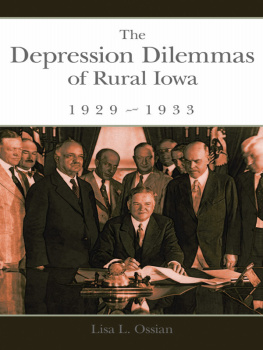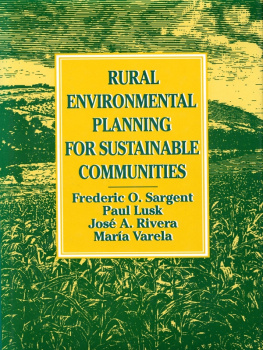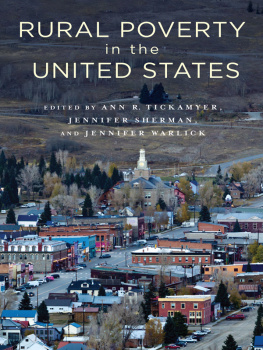Glimpses - Iowas Rural Legacy

Recollections and Commentary
Published by the Iowa Farm Business Association Foundation
Copyright 2004, Iowa Farm Business Association Foundation.
All rights reserved.
Cover Design by HKR Communications & Marketing
No part of this publication may be reproduced, stored in a retrieval system, or transmitted, in any form or by any means, electronic, mechanical, photocopying, recording, or otherwise, without the written prior permission of the author.
Note for Librarians: a cataloguing record for this book that includes Dewey Decimal Classification and US Library of Congress numbers is available from the National Library of Canada. The complete cataloguing record can be obtained from the National Librarys online database at:
www.nlc-bnc.ca/amicus/index-e.html
ISBN 1-4120-4350-6

Offices in Canada, USA, Ireland, UK and Spain
This book was published on-demand in cooperation with Trafford Publishing. On-demand publishing is a unique process and service of making a book available for retail sale to the public taking advantage of on-demand manufacturing and Internet marketing. On-demand publishing includes promotions, retail sales, manufacturing, order fulfilment, accounting and collecting royalties on behalf of the author.
Book sales in Europe:
Trafford Publishing (UK) Ltd., Enterprise House, Wistaston Road
Business Centre, Wistaston Road, Crewe CW2 7RP UNITED KINGDOM
phone 01270 251 396 (local rate 0845 230 9601)
facsimile 01270 254 983;
Book sales for North America and international:
Trafford Publishing, 6E2333 Government St.,
Victoria, BC V8T 4P4 CANADA
phone 250 383 6864 (toll-free 1 888 232 4444)
fax 250 383 6804; email to
www.trafford.com/robots/04-2158.html
10 9 8 7 6 5 4 3 2
Contents
T he Farm Business Association Foundation is appreciative of the effort put forth by all the authors who submitted stories about their rural legacies for the book. The book itself is one that each of us will want to share with our grandchildren, great-grandchildren and hopefully, even their offspring. Change is ongoing, and its important that we keep some perspective about the past and how it relates to today and to the future.
One of the authors, LaVern Patterson, was a close friend of mine and grew up just one mile east of my parents farm near Essex, Iowa. My Dad was LaVerns 4-H Leader. LaVern was diagnosed with cancer in 2003. I asked LaVern to write a story for the book. Time went on and on, and I didnt get one. I sent him a very nice reminder and eventually got a phone call from his wife, Karen, asking if it was too late to submit a story. She was calling from the Red Oak, Iowa, hospital. LaVern had taken a turn for the worse. I told her that there was time! They worked on it and sent it off. About three weeks later, LaVern died. It is important to note his commitment to the book and to me. He said he would do it, and by golly, he did. Thank you, LaVern-job well done!!!
The Farm Business Association Foundation is in its infancy stage of life. It has accomplished some important projects, but the publishing of this book is one of the most significant ones. Without the help of our editors, Helen Randall and Aaron Qualio, and the cover and divider page design work of Mindy Samuelson, the book would not have materialized. In spring 2003, Jacqui Becker Fatka used the idea of this book for her project in an advanced journalism course at Iowa State University. We have received much insight from her work.
The profit from the sale of the book will be returned to rural Iowa. Rural Iowa is changing and will continue to do so. Our mission within the Farm Business Association Foundation is to be able to help/assist farm families, rural non-farm families and rural communities deal with the many changes, opportunities and decisions they face in the future. We certainly do not tell them what to do, but simply help them as they make their decisions to carry out their goals.
We had 70-plus articles submitted for the book. We were not able to use all of them. It was tough to decide what to use or not use. Every story submitted was very, very good. The Foundation hopes to publish a second edition in the future. Some of the articles not used in this edition will then be used in the next one. If you have a special story about your rural past, please share it with us.
Thank you,
Jim Almquist
President, FBAF
By Neil Harl
T he editors of Glimpses: Iowas Rural Legacy took seriously the oft-quoted dictum that a good writer knows how to evoke the emotions. The assembled stable of writers has produced an interesting, highly readable-and nostalgic-volume. Some of the essays will make you laugh; some may bring tears to your eyes. But any one is worth the price of the book.
The era spanned by the essays represents perhaps the greatest period of change ever experienced by the agricultural sector since the dawn of civilization. The authors pick up the story in the early decades of the 20th century and carry the theme well past the mid-century, even into today.
As one pulls back from the details of how individuals and families coped with change as they continued the age-old task of providing food for an always-hungry world, the larger picture reveals two persistent forces that were impacting agriculture: (1) the enormous change in genetics and (2) the highly important technology of power. These two forces combined to assure that a growing population in the country would have an adequate food supply with a growing slice of production moved into export.
Just a brief personal note about each of those enormously important developments:
In early February of 1937, my father, a tenant farmer in southern Iowa, issued marching orders to his second oldest son-butt and tip every ear in the small crib. The year 1936 had been terribly dry (and hot), corn yields were down and the ears were small. But I did as I was told. My dad ran the ears through a hand corn sheller and that was the seed supply for the 1937 crop. The yields were better than in 1936-about 40 bushels per acre. But a few of the neighbors were using hybrid corn (too expensive, I can still hear my dad say). But he became a believer with the better yields, so in 1938, it was all hybrids-and the yields jumped to 60 bushels per acre. Sixty-five years later, just a short distance from where I sat in February of 1937, the yields hit 200 bushels per acre. Thats an astounding increase in productivity. That phenomenon has boosted output, pressured prices and delivered the benefits mostly to consumers in the form of lower and lower food costs.
he other earth-shaking development was the technology of power. My dad farmed with horses until the autumn of 1946. Thats when the new John Deere B arrived at the local dealership, capping a two-year wait as the manufacturers ramped up peace-time production after throwing all of their capacity into the war effort. A Model B, identical to Dads 1946 tractor, now sits in our machinery storage shed in a tiny corner, alongside our tenants behemoths, with more than 10 times the power of that Model B. Still, it requires just one person to navigate the behemoths, the same as was needed for the Model B and the same as was required for a four-horse hitch from decades back. The substitution of capital for labor has been truly awesome.
And we wonder why agriculture has changed so much! The consequences are felt in every small town in the country and in every family involved in food production. Nostalgia aside, theres little chance of a reversal.
Next page









